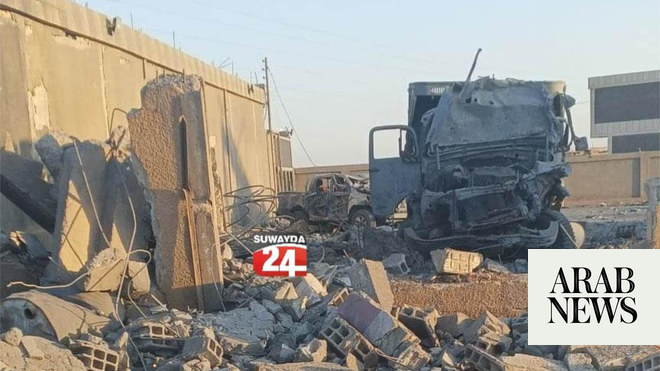
Three documents offer the only window that grants us a glimpse into what the Middle East policy of President-elect Donald Trump’s second administration could look like: The Trump Peace Plan for resolving the Palestinian-Israeli conflict, the Abraham Accords that allowed for Arab-Israeli normalization and the nuclear deal with Iran that President Barack Obama’s administration and the other members of the P5+1 concluded in the summer of 2015, which the first Trump administration withdrew from in the spring of 2018, claiming to have a vision for a stronger and better alternative agreement.
The peace plan proposed by Trump, which its architect and the president’s son-in-law Jared Kushner named the “Deal of the Century,” sought to leave the possibility of a two-state solution — the establishment of a Palestinian state alongside Israel — open. The plan imposed significant restrictions on this Palestinian state, which the Palestinians saw as nothing more than a fragmented and demilitarized entity. Meanwhile, it granted Israel the right to annex large parts of the West Bank and maintain full security control over the Palestinian state, including its borders.
Although the plan was preceded by unilateral American recognition of Jerusalem as the capital of Israel, the proposal seemed to disregard — despite including a $50 billion economic incentive package — every other historical peace plan, as well as the requisites for Palestinian sovereignty and the fulfillment of Palestinians’ aspirations for national independence. Indeed, the emphasis of Trump’s plan on economic incentives and security guarantees, instead of traditional paths toward peace, made drawing Arab and international support for the deal impossible.
In the first post-election call between Palestinian President Mahmoud Abbas and President-elect Trump, the latter said he was committed to ending the war and achieving peace. This means that the priority of the US, the goal that the president wants to invest his effort and time into achieving, will be ending the war.
The goal that the president wants to invest his effort and time into achieving will be ending the Gaza war
Nadim Koteich
On several occasions during the campaign, Trump spoke of his deep skepticism about the feasibility of the two-state solution, indicating that he was more inclined to support alternative frameworks to contain the conflict by focusing on stability and development. Due to the catastrophic results of the war, there seems to be fertile ground for a solution founded on “peace to prosperity.” This prospect seems more plausible than many might expect in light of the setbacks suffered by the Palestinian national project and the catastrophic costs of pursuing the resistance project.
The second pillar, the Abraham Accords, also encompasses nontraditional frameworks for resolving the Palestinian question. To the president-elect, broadening the scope of peace is crucial for creating a new strategic framework in the Middle East that reshapes the region’s economic and political landscapes.
At the core of this vision is Trump’s push for a comprehensive peace effort led by Saudi Arabia.
The way Trump sees it, this development, if it occurs, would help create a climate that allows for major economic shifts crucial to shaping the future of the Middle East and the world. Trump is betting that the peace to prosperity framework will allow him to hit two birds with one stone: first, enhancing the economic situation in the Palestinian territories through massive investments in infrastructure, employment, healthcare and education; and second, creating frameworks that ensure interest-based cooperation and Israel’s integration into the political, economic and social fabric of the region.
Trump is betting that the peace to prosperity framework will allow him to hit two birds with one stone
Nadim Koteich
Finally, Trump’s Iran policy is not expected to be radically different from the one he adopted in his first term, which balanced severe economic sanctions with direct surgical military pressure, such as the assassination of Qassem Soleimani, and avoiding direct and open warfare. Nonetheless, Trump’s withdrawal from the nuclear deal in 2018 and the reimposition of sanctions on Iran through the “maximum pressure” campaign should not blind us to the fact that the president-elect is open to negotiating a new agreement with Tehran — a stronger and more comprehensive agreement with his name on it.
If Trump remains determined to prevent Iran from acquiring nuclear capabilities — and since Iran has not publicly said it seeks to produce a bomb — there is ample room for compromise between the two sides, especially given the decline in Iran’s regional influence following the severe blows suffered by its proxies, Hamas and Hezbollah.
These three agreements outline the broad framework of Trump’s Middle East policy and he will not deviate from it significantly. At its core are: first, growing skepticism that the two-state solution is the sole framework for resolving the Palestinian-Israeli conflict; second, achieving comprehensive peace in the Middle East through the prioritization of mutual economic gain; and third, a strong stance on Iran’s behavior that also keeps the door open to a political understanding with Tehran that serves regional security and US interests.
While critics have called him temperamental and unpredictable, Trump’s Middle East policy has been consistent and coherent. It is rooted in explicit pragmatism and practical American national interests rather than ideological or ethical commitments. This could present the Middle East with an unprecedented opportunity.
Nadim Koteich is the General Manager of Sky News Arabia. X: @NadimKoteich












